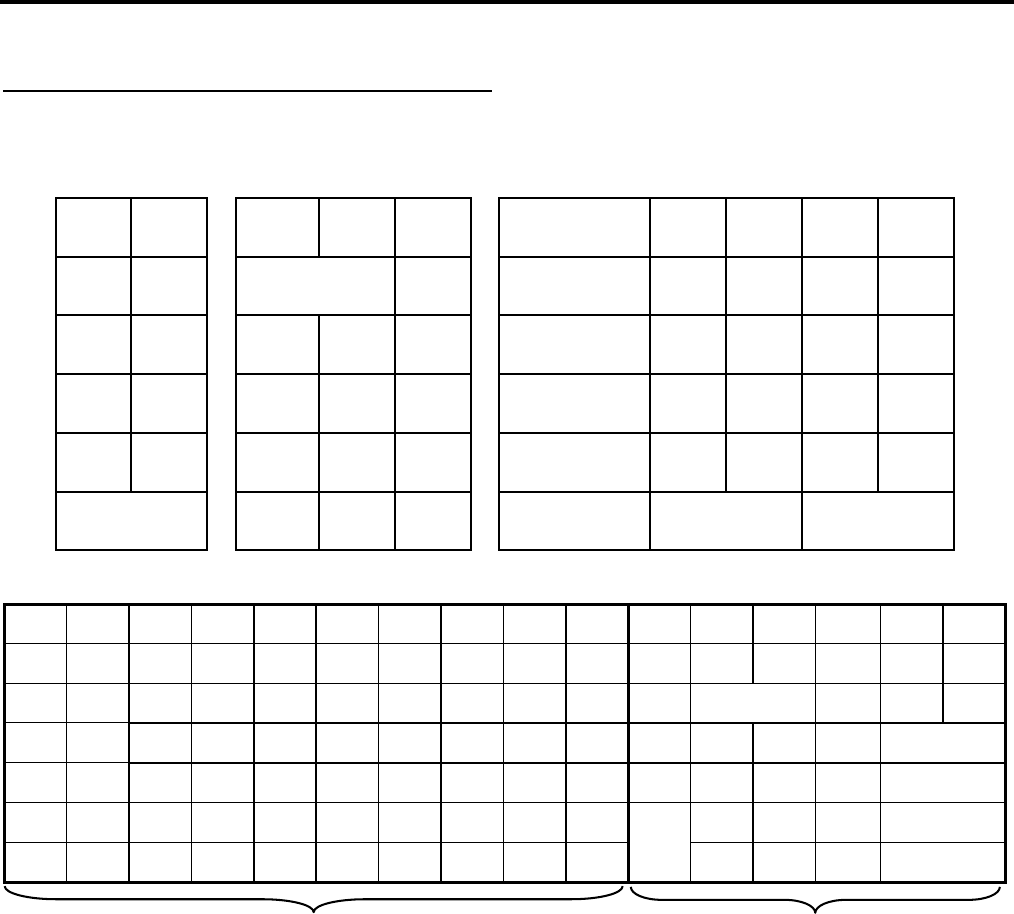Operation Manual
Table Of Contents
- Safety Summary
- OPERATOR’S GUIDE
- TO OUR CUSTOMERS
- ACCESSORIES
- APPEARANCE AND NOMENCLATURE
- MODE LOCK AND MODE SELECTOR KEYS
- DISPLAY
- OUTLINE OF PREPARATION PROCEDURE BEFORE
- CASHIER SIGNING OR CASHIER KEY OPERATIONS
- KEYBOARD LAYOUT
- FUNCTIONS OF EACH KEY
- DAILY OPERATION FLOW
- REGISTERING PROCEDURE AND PRINT FORMAT
- No-Sale
- Department Entry
- PLU Entry (Manual PLU Code Entry)
- PLU Price Shift Entry
- Repeat Entry
- Quantity Extension (Multiplication) for DEPTs/PLUs
- Single-Item Department or Single-Item PLU Entry
- Returned Merchandise
- Amount Discount
- Percent Discount, Percent Charge
- Store Coupon
- Vendor Coupon
- Item Correct
- Void
- All Void
- Non-Add Number Print
- Listing Capacity Open
- Tax Status Modification
- Subtotal (Sale Total Pre-taxed) Read
- VAT Calculation and Print (VAT = Value Added Tax)
- VAT Print
- Add-on Tax Calculation and Print
- Tax Exemption (for Add-on Tax Feature)
- VAT Exemption (for VAT Feature)
- Finalizing a Sale
- Multi-Tendering
- Split Tendering
- Cheque Cashing (No-sale cashing of a non-cash media)
- Special Rounding
- Denmark Rounding
- Sale Paid in Foreign Currencies
- No-Sale Exchange from Foreign Currency to Domestic Currency
- No-Sale Exchange from Domestic Currency to Foreign Currency
- Paid-Out
- Received-on-Account
- Salesperson Entry (Salesperson Sign-ON)
- Receipt-Issue/Non-Issue Selection
- Receipt Post-Issue
- Charge Posting: Previous Balance Manual Entry Type
- Journal Print (Thailand Specification)
- VAT Total Display
- Consignment Print
- Validation Print
- Remote Slip Printer (hardware option) Operation
- When a Power Failure Occurs...
- JOURNAL AND RECEIPT PAPER-END DETECTOR
- PRINTER HEAD OPEN DETECTOR
- REMOTE SLIP PRINTER MOTOR LOCK DETECTOR
- GENERAL MAINTENANCE
- SPECIFICATIONS
- MANAGER’S GUIDE
- OPERATIONS IN “MGR” MODE
- OPERATIONS IN “ - ” MODE
- READ (X) AND RESET (Z) REPORTS
- PROGRAMMING OPERATIONS
- Instructions for Programming
- Character Entries
- Condition Required for Programming Operations
- SET Mode Menu
- Time Setting or Adjustment
- Date Setting or Adjustment
- Commercial Message Programming
- Footer Message Programming
- Store Name Message Programming
- Cashier Name and Status Programming
- Department Name Programming
- Department Group Name Programming
- PLU Name Programming
- Salesperson Name Programming
- Department Table Programming
- PLU Table Programming
- Department Preset Price Setting or Changing
- PLU Preset Price Setting or Changing
- %+ and %- Preset Rate Setting
- Foreign Currency Exchange Rate Setting
- VERIFICATION OF PROGRAMMED DATA

4. PROGRAMMING OPERATIONS EO1-11154
4.2 Character Entries
4- 9
4.2.2 Direct Character Entry Method
Using Keyboard (installed as the ECR Main Keyboard):
-- Keyboard layout for programming --
• Ordinary Type Keyboard
↑
Del History RF JF A F K P U
↓
ALL
VOID
C # B G L Q V
←
Rtn 7 8 9 C H M R W
→
Dbl 4 5 6 D I N S X
Enter A/a 1 2 3 E J O T Y
PLU 0 00
.
? End Z
• Flat Type Keyboard
1 2 3 4 5 6 7 8 9 0
LOG
RF JF
↑ ↓
! @ # $ % & * ( ) : A/a Dbl Del
ALL
VOID
← →
β Σ
u a e e a e c
Π# C
History
Rtn
Enter
A O U A A U
£ Ø + - ? 7 8 9
Q W E R T Y U I O P X 4 5 6
? A S D F G H J K L 1 2 3 ST
SP Z X C V B N M ,
PLU
0 00
.
End
Character Key for Programming Function key for programming
Character Keys: Simply depress the key to enter the character. (The [#] key should not follow.) Then numeric
values 1 to 0 are entered as characters 1 to 0 but not as codes for PLU Item Codes, etc.
Function Keys: These are function keys to be used in programming operations with the keyboard layout for
programming. The numeric keys here are used for entering PLU Codes, etc. or numeric
values as program data, but not for entering the numeric values as characters.










